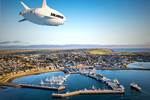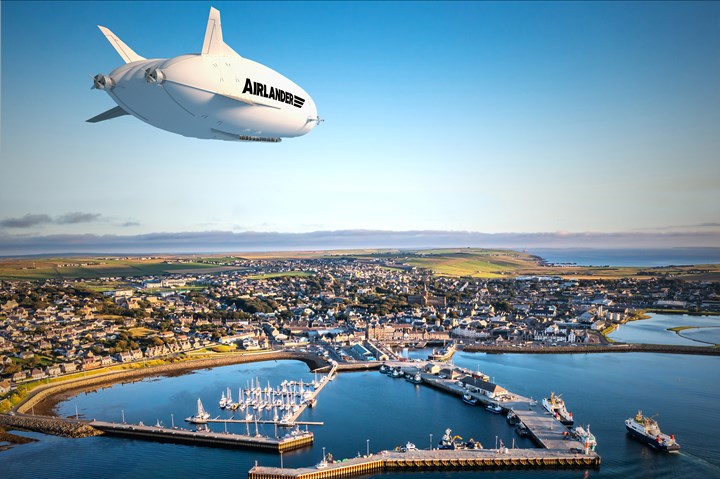BAE Systems, Hybrid Air Vehicles agree to explore defense, security applications
Under a recent MOU, HAV’s ultralow emissions Airlander aircraft will be explored for airborne defense logistics and long-endurance airborne communications and surveillance with large payloads.
Hybrid Air Vehicles (HAV, Bedford, U.K.), developing the composites-intensive, ultralow emissions Airlander 10 hybrid air vehicle, has announced a memorandum of understanding (MOU) to collaborate and explore the potential of Airlander in security and defense applications with BAE Systems’ FalconWorks (Farnborough, U.K.) advanced research and technology (R&T) center for the Air sector.
The MOU covers consideration of technical and program collaboration opportunities and exploration of potential defense market opportunities for HAV platforms, as well as related supporting activity.
HAV’s Airlander platforms provide an alternative sustainable and cost-effective solution to air logistics and intelligence surveillance and reconnaissance (ISR) capabilities, complementing today’s networks of air, space and surface systems (read “Airlander 10: The future of zero-carbon aviation”). Airlander 10 has the potential to stay airborne for up to 5 days while fitted with many tonnes of computing, communications, surveillance and reconnaissance capabilities. Its ability to operate from any reasonably flat surface, including water, with minimal infrastructure, offers mobility, deployability and flexibility in support of maritime, coastal and land-based expeditionary warfare in areas where current platforms are challenged.
In defense logistics, Airlander 10, with the ability to carry up to a 10 tonnes logistics payload, provides longer range, lower cost and higher capacity air transport than current military transport helicopters, according to the company. The future Airlander 50 and Airlander 200 platforms will offer low-cost, sustainable, tactical and strategic air lift capability.
“The changing character of conflict is driving new and novel approaches across the defense sector, including using new sources of synthetic and sustainable power, new materials and new processes that allow us to harness sustainable tech right from the outset,” says Dave Holmes, managing director, FalconWorks, BAE Systems Air. “We’re excited to work closely with the Hybrid Air Vehicles team to jointly explore and advance Airlander’s potential defense and security capabilities.
The MOU follows the strong partnerships HAV has formed with the U.S.’ Naval Postgraduate School and the U.S. Department of Defense Operational Energy Office. These and other ongoing research, development and testing activities underline the value of Airlander across communications, surveillance and logistics roles.
For related content, read “Next-generation airship design enabled by modern composites.”
Related Content
-
A new era for ceramic matrix composites
CMC is expanding, with new fiber production in Europe, faster processes and higher temperature materials enabling applications for industry, hypersonics and New Space.
-
Plant tour: Joby Aviation, Marina, Calif., U.S.
As the advanced air mobility market begins to take shape, market leader Joby Aviation works to industrialize composites manufacturing for its first-generation, composites-intensive, all-electric air taxi.
-
Plant tour: Albany Engineered Composites, Rochester, N.H., U.S.
Efficient, high-quality, well-controlled composites manufacturing at volume is the mantra for this 3D weaving specialist.

















